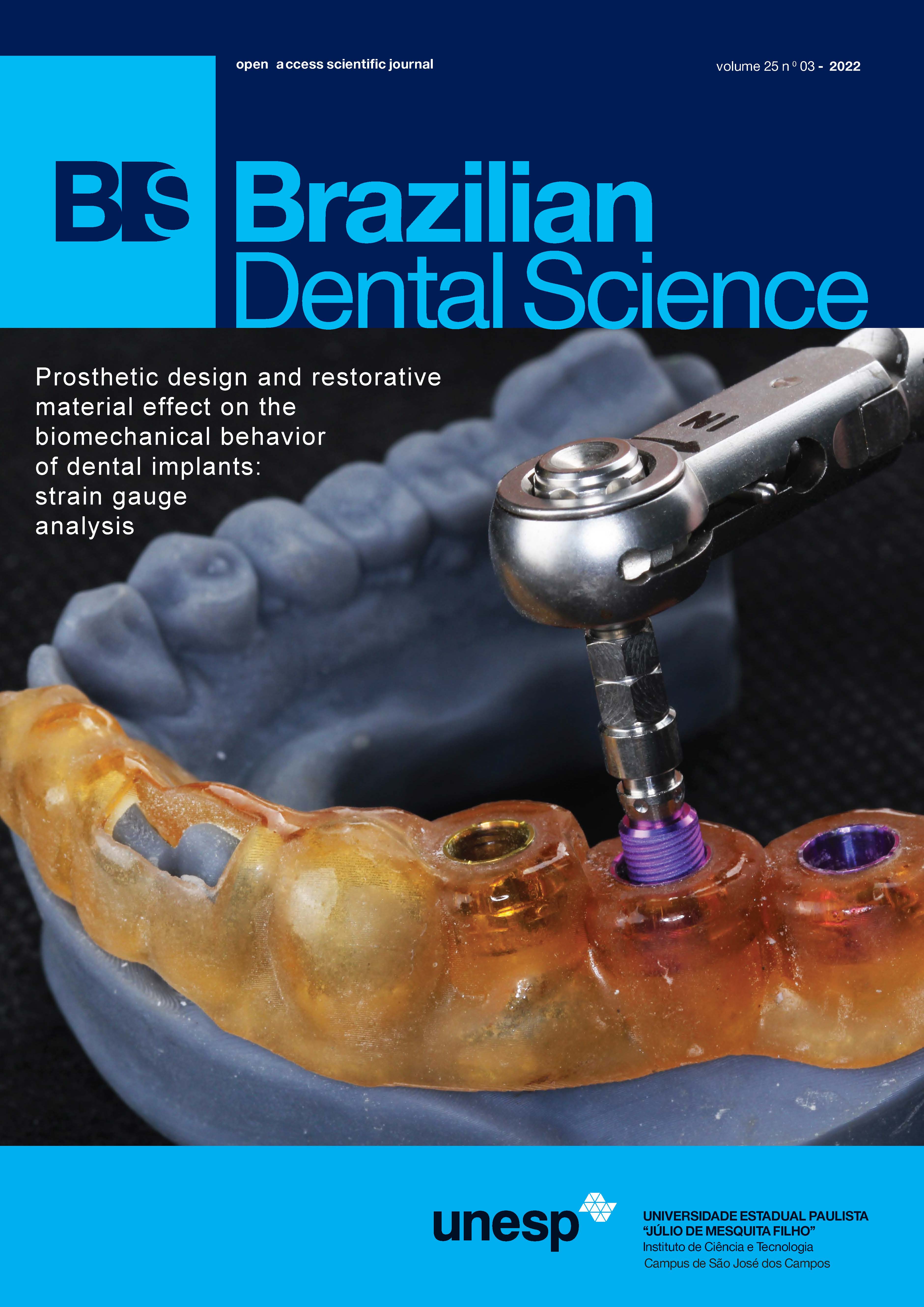Comparative evaluation of inter appointment pain and analgesic intake with calcium hydroxide and triple antibiotic paste as intracanal medicaments in patients with apical periodontitis – a randomized controlled single-blinded clinical trial
Interappointment and analgesic intake on using two different medicaments
DOI:
https://doi.org/10.4322/bds.2022.e2536Resumo
Objective: This study aimed to evaluate the effect of calcium hydroxide and triple antibiotic paste as intracanal
medication on the interappointment pain at 8, 24, and 48 hours postoperatively in patients with symptomatic
apical periodontitis undergoing multiple visit root canal treatment. Material and Methods: Two hundred and
seven systemically healthy patients under the age group of 18-45 years with mandibular molars presenting with
symptomatic apical periodontitis which require root canal treatments were included in this study. After access
cavity preparation, cleaning and shaping was done till ISO 25 size file, and the patients were randomized into
three groups (each group of 69 samples). Group I: no medicament, group II: calcium hydroxide and group III:
triple antibiotic paste (TAP). Postoperative pain was evaluated at 8 hours, 24 hours and 48 hours. Results:
The results showed that at 8 hours, 24hours and 48hours, there was a statistical difference between I and III
(p < 0.05); and Group III and Group II (p < 0.05). Within the group, there was a statistical difference at all
time points IN Group I and II (p < 0.05) except between 24 hours and 48 hours in the Group III (p > 0.05).
Conclusion: Within the limitations of this study, TAP was more effective than calcium hydroxide in relieving
pain and reducing the analgesic intake at the first 24hours.
KEYWORDS
Intracanal medicament; Calcium hydroxide; Triple antibiotic paste; Interappointment pain; Apical periodontitis.
Downloads
Downloads
Publicado
Versões
- 2022-06-23 (3)
- 2022-06-21 (2)
Como Citar
Edição
Seção
Licença
TRANSFERÊNCIA DE DIREITOS AUTORAIS E DECLARAÇÃO DE RESPONSABILIDADE
Toda a propriedade de direitos autorais do artigo "____________________________________________________________________" é transferido do autor(es) para a CIÊNCIA ODONTOLÓGICA BRASILEIRA, no caso do trabalho ser publicado. O artigo não foi publicado em outro lugar e não foi submetido simultaneamente para publicação em outra revista.
Vimos por meio deste, atestar que trabalho é original e não apresenta dados manipulados, fraude ou plágio. Fizemos contribuição científica significativa para o estudo e estamos cientes dos dados apresentados e de acordo com a versão final do artigo. Assumimos total responsabilidade pelos aspectos éticos do estudo.
Este texto deve ser impresso e assinado por todos os autores. A versão digitalizada deverá ser apresentada como arquivo suplementar durante o processo de submissão.




























